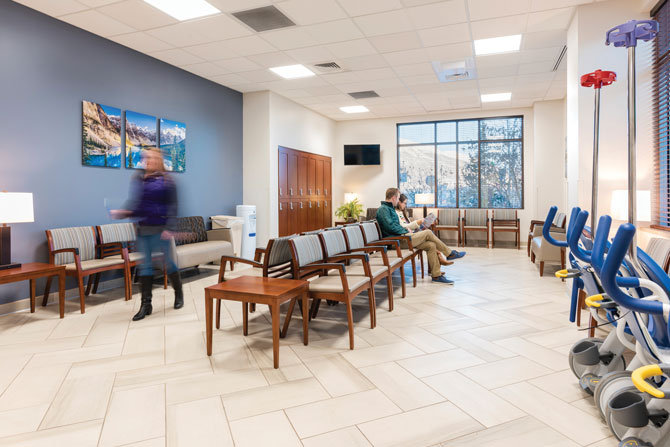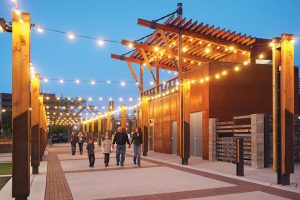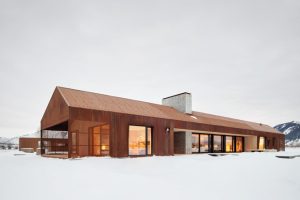Designing a space for a rural healthcare provider can present a very different set of concerns and priorities than designing a similar program for a hospital in an urban setting. Many healthcare facilities in Wyoming qualify as rural providers — facing the persistent challenges of low patient volume, patient and payer mixes, and geographic isolation. These challenges, among others, demand a different design approach from their urban and suburban counterparts. In the following article, we will take a closer look at some of the key design topics to focus on as a healthcare architect, designer, or planner when working with many of the state’s healthcare providers.
Flexibility
Flexibility is a critical factor in every healthcare project, but it takes on an added urgency in designing for a more remote healthcare provider. Most rural and less populated areas do not have the patient volume to sustain dedicated specialty practices. For that reason, it is common for specialists to rotate through a given location on a weekly or another basis. This structure for providing care demands flexible, multi-specialty exam rooms and associated spaces that can serve the needs of a variety of visiting specialists.
Telemedicine and Telehealth
A growing trend in rural healthcare is the use of telemedicine to connect patients with specialists, who are typically clustered in urban centers near large hospital systems. However, for a rural healthcare provider to fully leverage the opportunities of telemedicine, the provider must develop a coherent system, including the requisite technology and management. Recently, the FGI Guidelines for Design and Construction provided direction on the design of these environments, emphasizing the need to differentiate telemedicine spaces from standard exam rooms. Telemedicine spaces have different requirements for paint sheen, camera mounting height, and lighting, especially the color temperature and a high CRI (color rendering index), acknowledging that these spaces must support the needs of virtual consultations.
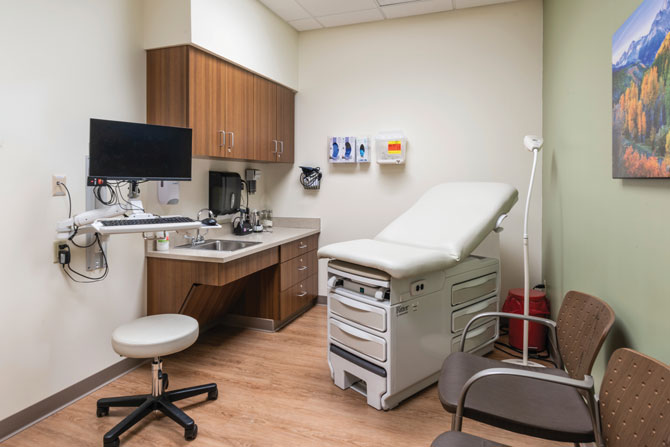
Attracting Medical Talent
Rural areas in the U.S. have suffered from a shortage of healthcare professionals for decades. While improving healthcare outcomes is a priority in our design process, we emphasize the importance of healthcare spaces as workplaces, too. The ability to attract and then retain staff, especially primary care doctors, is a critical design goal that we consider for every significant project.
Protecting Privacy
The size of the community being served is another critical difference between a rural healthcare provider and an urban one. If a city resident travels to one of several behavioral health providers in their urban area, it’s not likely they encounter their neighbor. The story is different in a small community where there may be only a single behavioral health clinic. To maintain patient privacy, we bring different patient groups into the same waiting room and create check-in/check-out pods that allow for patient privacy so they don’t have to converse publicly at a reception desk. We design each touchpoint between patient and staff with great intentionality and care, ensuring that partition walls surrounding exam rooms extend to the deck above and are filled with batt insulation to limit sound transition between patient/exam rooms. We also install privacy door swings with continuous door hinges so that patients sitting or lying on an exam room table are not visible from the hallway when a provider enters the room.
Creating an Identity
Healthcare facilities are often the newest and most expensive facilities in a community. In an urban setting, “creating an identity” can be an afterthought, but for rural areas, a strong design identity can serve as a strong advantage for community relations and institutional marketing. These buildings and spaces can also serve as a way to draw in new community members and attract medical talent. Rural healthcare is very much centered on relationship-based care; the facility can play an important role in communicating the trust, safety, and comfort of the overall patient experience.
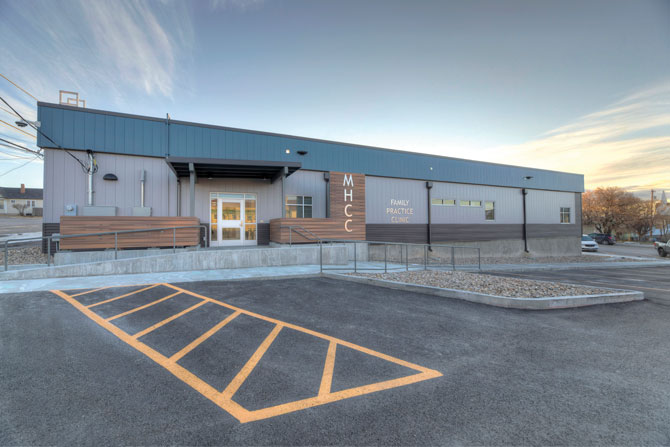
Access to Building Materials
Rural locations do not have access to as many building materials or the same skilled labor pool as suburban and urban locations. It is critical to keep the required labor and materials front and center during the design process. The construction of healthcare facilities in these locations requires designs that feature readily constructible elements and use materials that can be sourced locally. Many rural communities have a great sense of pride in their community and prefer to support their local economy.




